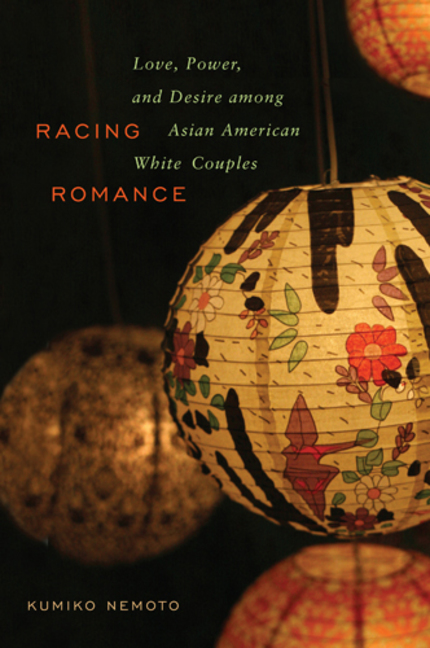Racing Romance: Love, Power, and Desire Among Asian American/ White CouplesPosted in Asian Diaspora, Books, Media Archive, Monographs, Social Science, United States on 2012-09-23 03:06Z by Steven |
Racing Romance: Love, Power, and Desire Among Asian American/ White Couples
Rutgers University Press
June 2009
208 pages
6 x 9
Paper ISBN: 978-0-8135-4533-2
Cloth ISBN: 978-0-8135-4532-5
Web PDF ISBN: 978-0-8135-4852-4
Kumiko Nemoto, Associate Professor of Sociology
Western Kentucky University
Despite being far from the norm, interracial relationships are more popular than ever. Racing Romance sheds special light on the bonds between whites and Asian Americans, an important topic that has not garnered well-deserved attention until now. Incorporating life-history narratives and interviews with those currently or previously involved with an interracial partner, Kumiko Nemoto addresses the contradictions and tensions—a result of race, class, and gender—that Asian Americans and whites experience.
Similar to black/white relationships, stereotypes have long played crucial roles in AsianAmerican/white encounters. Partners grapple with media representations of Asian women as submissive or hypersexual and Asian men are often portrayed as weak laborers or powerful martial artists. Racing Romance reveals how allegedly progressive interracial relationships remain firmly shaped by the logic of patriarchy and gender inherent to the ideal of marriage, family, and nation in America, even as this ideal is juxtaposed with discourses of multiculturalism and color blindness.
